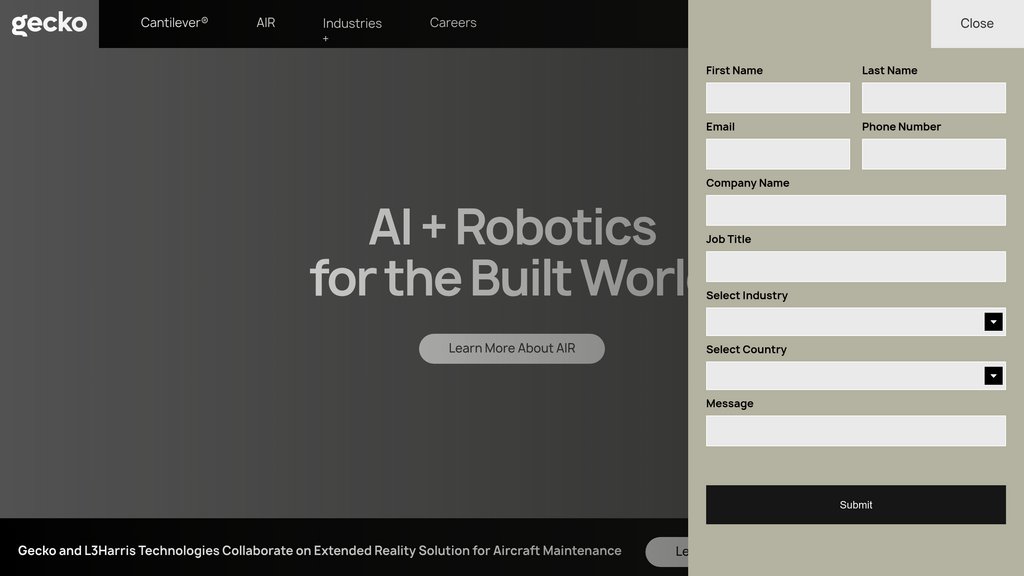Gecko Robotics
Robotic infrastructure inspection for smart maintenance and extended asset lifespan
Introduction
What is Gecko Robotics?
Gecko Robotics creates advanced robotic solutions and software dedicated to the inspection and monitoring of vital infrastructure, including pipelines, power generation facilities, and industrial plants. Their agile robots are engineered to traverse challenging environments—climbing, crawling, and even swimming—to reach inaccessible zones, capturing high-resolution data for accurate condition evaluation. The Cantilever operating system synthesizes this information, empowering informed decisions, enhancing maintenance strategies, and prolonging the service life of assets in sectors like oil and gas, energy, and defense.
Key Features
Versatile Robotic Mobility: Robots feature adaptable designs with independent suspension and drive systems, allowing them to expertly navigate intricate structures such as narrow pipes, bends, and elevated platforms.
High-Density Data Collection: Fitted with arrays of ultrasonic probes and heat-resistant sensors, these robots rapidly acquire comprehensive inspection data, even in high-temperature environments reaching up to 275°F.
Integrated Operating Platform: The Cantilever platform brings all inspection data together into a single, cohesive interface, facilitating live analysis, predictive analytics, and efficient asset management.
Robots as a Service (RaaS): A flexible subscription model that provides clients with access to state-of-the-art robotic inspection technology without the need for significant initial capital outlay.
Safety and Efficiency: By deploying robots, human workers are kept away from dangerous conditions, while the inspections themselves yield more thorough and precise data compared to conventional manual techniques.
Use Cases
Industrial Asset Inspection: Examining pipelines, boilers, storage tanks, and other critical infrastructure to identify issues like corrosion, buildup, and material flaws.
Power and Energy Sector: Supporting the upkeep of power plants, including specialized tasks such as inspecting welds on nuclear submarines and modernizing missile silos for defense applications.
Manufacturing Facilities: Guaranteeing reliability in operations by conducting detailed assessments of equipment in various industrial settings, including chemical and paper plants.
Infrastructure Maintenance Planning: Delivering practical data to help prioritize repair work, optimize spending, and maximize the operational life of valuable assets.
